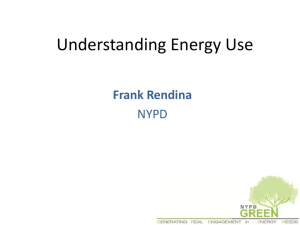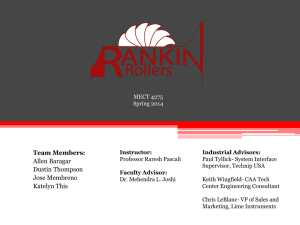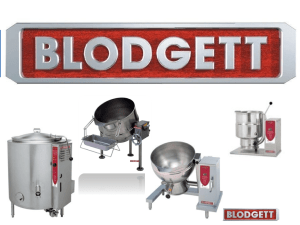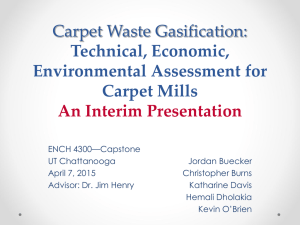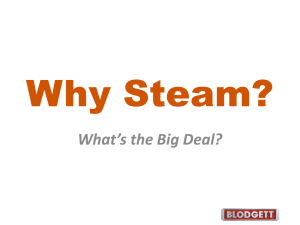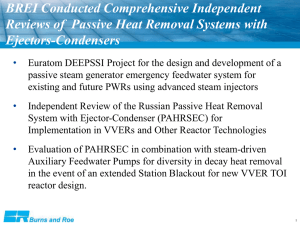steam water - Blodgett Oven
advertisement
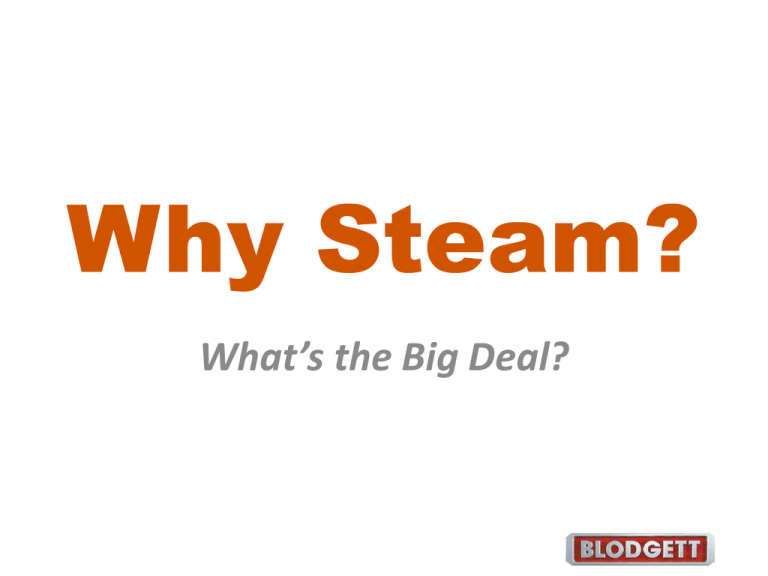
Why Steam? What’s the Big Deal? Cooking Energy Sources • Radiation – visible light, infra-red, microwaves • Convection – heated air, steam • Conduction – contact with a heated surface or liquid Steam Cooking • Braising Pans (as a steamer) – boiling water provides atmospheric pressure steam (0 PSI) 212° F. Air acts as an insulator and slows cooking, compared to a “true” steamer. • Kettles – jacket wall heats to the steam temperature, pressure inside jacket gives a temperature above 212° F for cooking. • Steamers/Combis – steam at atmospheric pressure (0 PSI) 212° F condenses on food surface and transfers latent heat directly. Heat versus Temperature • Heat is energy – the energy of molecular motion in a material • Temperature is a measure – the measure of kinetic energy of the molecules in a material Boiling v. Pressure • The temperature where water changes to steam varies depending upon the pressure • At sea level (~14psi), water boils at 212°F • At 6000’ water boils at 201°F • At 50psi water boils at 298°F Temperature is related to Heat… • One BTU is the heat required to raise the temperature of one pound of water by 1°F …but not always • Sometimes heat changes the structure (phase) of a material instead of raising the temperature – Ice to Water – Water to Steam Why Steam? • Definition: Steam – invisible gas into which water is changed by boiling [Oxford American Dictionary] • Advantages: – – – – Flows easily through pipes and tubing Carries more energy than air or radiation “Wants” to become water Has no odor or taste • Disadvantages: – “Wet” environment – does not “brown” – Pressure and burn hazards – Lime scale Enthalpy of Steam • BTU (British Thermal Unit) = the amount of heat required to raise the temperature of one pound of liquid water by 1 degree Fahrenheit at its maximum density, which occurs at a temperature of 39.1 degrees Fahrenheit. One BTU is equal to approximately 251.9 calories or 3.7 Watts. • Enthalpy = heat content capable of doing work • Sensible heat = portion of heat content introduced into water raising it from 32 to 212 degrees Fahrenheit (at 212° = 180 BTUs) • Latent heat = amount of heat energy introduced into 212 degree water to convert it into 212 degree steam (= 970 BTUs at atmospheric pressure) Sensible and Latent Heat • Sensible heat is the heat that changes the temperature of a material – it can be sensed • Latent heat is the heat associated with a phase change of a material – it is “within” the material but not sensed by a temperature change Latent Heat does the Cooking STEAM WATER Pressure and Temperature • As pressure increases, so does the sensible heat and temperature of steam • Latent heat decreases slightly PRESSURE TEMPERATURE SENSIBLE HEAT LATENT HEAT 0 PSI 212° F 180 BTU 970 BTU 5 PSI 227° F 195 BTU 961 BTU 15 PSI 250° F 218 BTU 946 BTU 50 PSI 298° F 267 BTU 912 BTU 100 PSI 338° F 309 BTU 881 BTU Heat Transfer • The heat transfer rate of condensing steam is much greater than the heat transfer of air convection • Example: you can put your hand into a 212°F (or higher) oven momentarily and not get burned • DO NOT put your hand into steam at 212°F. You WILL get burned. Steam Cooking • Steam is created when water absorbs heat (latent heat of 970 BTU/lb) and changes to steam…but the temperature stays at 212°F • Food is cooked when steam condenses on the food and releases its latent heat • AND THAT’S A LOT OF HEAT!! Summary • Steam cooks because it releases a large amount of heat to the food. • This process occurs when the steam condenses to water, releasing the latent heat. • The heat transfers more rapidly than normal convection air cooking. • The product remains moist.
